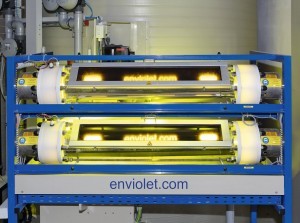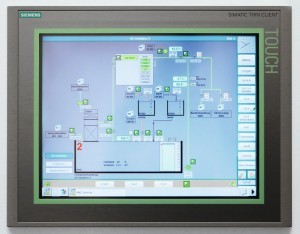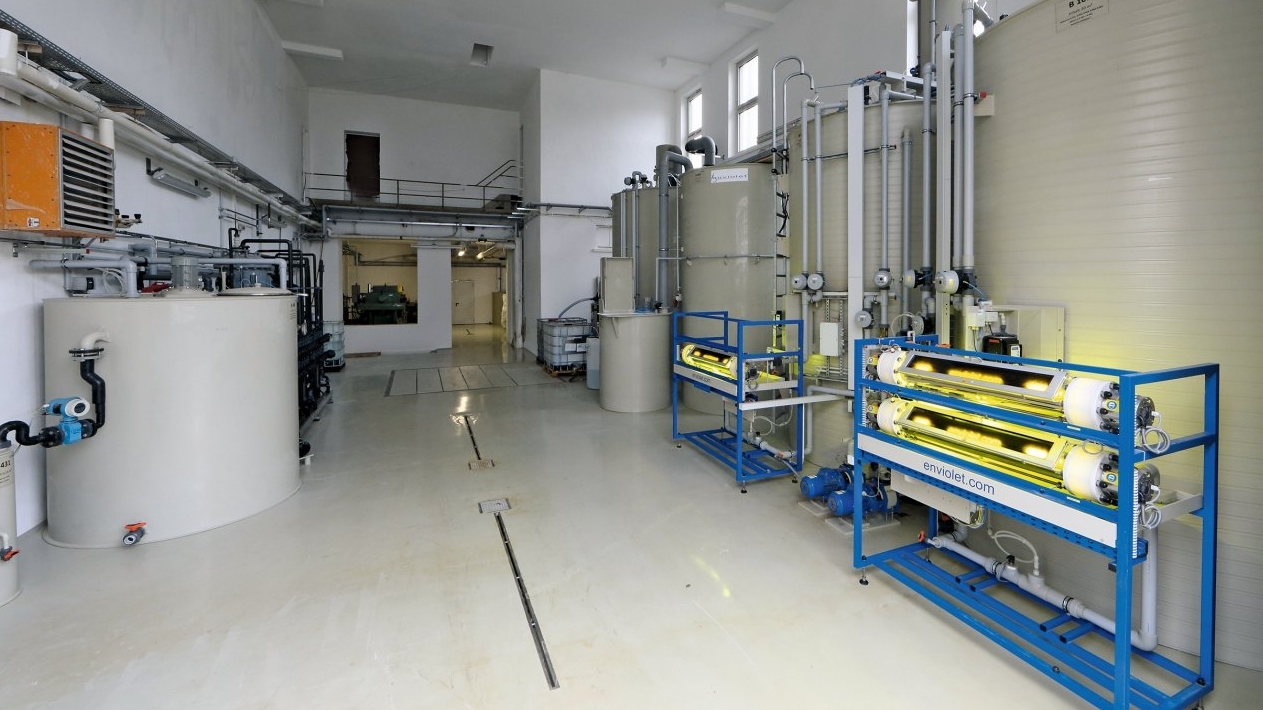Question: As we cannot do without cyanide in some of our in-house processes, we now have to convert our wastewater system and do without NaOCl treatment in future. We are currently looking at various alternatives, such as pure treatment with hydrogen peroxide and UV oxidation. The latter has some unknowns for us. What advantages and disadvantages does it have compared to treatment with sodium hypochlorite? What about the operating costs? And is it possible to continuously measure the cyanide content in the wastewater?
Answer: Cyanide can now be dispensed with in many processes, even if this is difficult for the electroplater. Most cyanide compounds are very toxic, which poses a risk to health and the environment. On the other hand, these compounds perform well in pre-treatment and coating and are easy to handle in the waste water system compared to other complexing agents.
However, due to the problems mentioned above, the need for cyanide should be reduced to a minimum. Nowadays, cyanides are mainly found in the pre-treatment of non-ferrous metals, a few cyanide electrolytes and special processes. If the volume of cyanide waste water is limited, it is often disposed of externally, whereby it is first concentrated using a vacuum evaporator.
The reason for not using sodium hypochlorite is usually the AOX problem. Occasionally, the cause is to be found in stronger cyanide compounds for which treatment with NaOCl is not sufficient. Oxidation with chlorite (chlorine gas can also be used as an alternative) has other disadvantages, which will be discussed later.
H2O2 in combination with NaOCl
One way to detoxify cyanide is hydrogen peroxide. In many cases, however, the oxidizing power is not sufficient for the complexes, which is why a combination of peroxide and sodium hypochlorite is chosen.
Hydrogen peroxide is first used to detoxify the free cyanide. For the bound cyanide, NaOCl is added up to the excess. The excess is usually measured with potassium iodide starch paper. The reaction times depend not only on the excess, but also to a large extent on the stirring technique and the total volume of wastewater. It is therefore not possible to transfer laboratory values directly into practice. With this combination, it is hoped that the AOX value will not be exceeded. This works in some cases, but has some disadvantages and dangers.
The greatest danger lies in the effect of catalysts on the hydrogen peroxide. Copper ions are notorious for this. Even with a relatively small excess of H2O2, a so-called overreaction can occur after a few hours of treatment. This is shown by the fact that within seconds a large proportion of the waste water to be treated is not in the treatment tank but next to it. Caution is therefore required here.
In addition, you are still using hypochlorite, which itself has a number of disadvantages. For example, it can form AOX with organic substances. But even if you can rule this out, chlorocyanine (ClCN, tear gas) and the toxic chloramines (NH2Cl, NHCl2 etc.) are formed.
Depending on the complex, detoxification can take a very long time or not work at all. The excess chlorine required for a successful reaction must be removed again at the end. This is usually done by adding hydrogen peroxide again.
When using sodium hypochlorite, attention must be paid to its storage stability. At a storage temperature of 10 °C the solution is relatively stable, but at 20 °C the concentration drops from 170 g/L to 140 g/L within 30 days.
Detoxification process
1) 2CN- + 2OCl- + 2H2O→ 2ClCN+ 4OH-
2.) 2ClCN + 4OH- → 2CNO- + 2Cl- + 2H2O
1.+2.) 2CN- + 4OH- → 2CNO- + 2Cl-
Complete reaction
3) 2CNO- + 3OCl- → N2 + 2CO2 + 3Cl + 2OH-
4) In the acidic range:
2CNO- + 2H2O→ NH4+ + HCO3
(ammonium and hydrogen carbonate)
4.) In the alkaline range:
2CNO- + 2H2O→ NH3 + CO32-
(ammonia and carbonate)
As the molecular formula:
2NaCN + 10NaOH + 5Cl2 → 2NaHCO3 + N2 + 10NaCl + 4H2O
It can be assumed that the cyanate always forms a certain amount of ammonia or ammonium. Cyanate is only stable in a strongly alkaline medium and is rapidly hydrolysed to ammonium hydrogen carbonate and ammonium carbonate during neutralization. As 4. shows, the direction is determined by the pH value. The speed and quantity depend both on the concentration of the cyanate or its starting material cyanide and on the concentration of metal ions. The more metal ions there are in the wastewater, the more the balance is on the side of ammonium / ammonia.
UV oxidation

UV oxidation of cyanide-containing wastewater has been tried and tested in practice for over 20 years. It is carried out in combination with hydrogen peroxide, whereby the wastewater is acidified. In many cases, it is not necessary to hermetically seal off the entire batch tank, as the HCN produced is either oxidized immediately or at least remains in the solution and does not escape as a gas. The effect of UV radiation on a substance takes place in two stages. The first step, the absorption of light in the visible and UV range, leads to excitation of the valence electrons in molecules. In the molecule, valence electrons form the common electron cloud (orbitals) between the atomic nuclei, on which the chemical bond is based. Absorption can be measured as an attenuation of the light intensity according to the absorbing medium (e.g. gas). The resulting extinction (optical density) is also influenced by reflection and scattering losses.
For a single gas, measurements for different wavelengths result in so-called band spectra. The bands are characteristic of certain electron transitions: the "swallowed" energy raises the bonding electrons to a higher energy level, which can also be a non-bonding orbital. This effect can cause the molecule to decay if the energy input is high enough. The first sub-step determines the proportion of UV radiation that is effective for the subsequent process through the degree of absorption in the medium. The degree of absorption depends on the wavelength of the UV radiation and the concentration of the absorbing substance.
Very compact reactors are used for UV oxidation, which usually consist of a stainless steel tube with an inserted quartz tube. The quartz tube contains the UV lamp with a standard output of between 1-12 kW. High-pressure and low-pressure mercury lamps are used. The dwell time of the waste water is in the range of 5-10 seconds, so that the UV reactor can be very small even with large quantities of water.
The energy input for wastewater treatment is approx. 1 kWh/m3 of water and ranges up to approx. 4 kWh/m3 for heavily contaminated wastewater. Laboratory and pilot tests must be carried out before each use of a technical system in order to identify the influence of impurities and to optimize the energy input or the dosage of the oxidizing agent.
Many UV oxidation systems work with special high-performance low-pressure mercury lamps. These are characterized by their very short-wave spectrum, which extends to below 200 nm.

The resulting short-wave UV radiation is able to attack chemical bonds directly and thus lead to the degradation of organic molecules. This means that not only cyanide is oxidized, but COD and TOC are also broken down. The second reaction path is via the production of OH radicals from the splitting of H2O2molecules. As very strong oxidizing agents, the OH radicals are able to break down the organic compounds. In contrast to the classic dosing of hydrogen peroxide, no undesirable side reactions, e.g. with copper ions, occur here. This is mainly due to the dosing technique and quantity.
The end products of the UV oxidation of chlorinated hydrocarbons are carbon dioxide, water and HCl. The latter is washed out in the washing tower, which contains water alkalized with caustic soda, and neutralized to form common salt.
Due to the side reactions, i.e. COD and TOC degradation, UV oxidation generally takes longer than with NaOCl. In practice, values of 12 to 72 hours are given, whereby in our experience the 72 hours are mixtures that cannot be treated at all with sodium hypochlorite. For example, complexes with nickel, cobalt or even iron as the central ion.
In addition to the treatment time, acquisition costs, space requirements and operating costs are also disadvantages, although the operating costs may well be lower than treatment with NaOCl [1]. Without knowledge of the exact composition and preliminary tests, it is impossible to make a binding statement.
Other alternatives
Ozonization
Ozonization was in vogue for a while. Technically there is nothing to be said against oxidation using O3, but economically this method is at a disadvantage compared to UV oxidation.
Due to the high oxidation capacity of ozone, toxic or refractory organic substances can be destroyed or oxidized, which would otherwise be difficult to remove from the respective wastewater.
Peroxomonosulphuric acid (H2SO5)
As the method has a pronounced potential jump, it is easy to monitor. However, caroate is expensive and complexes such as silver cyanide require high surpluses and very long reaction times.
Anodic oxidation
The anodic oxidation of cyanide is the most obvious detoxification, even if it is not the most common. If at all, it is usually connected in bypass to a sink and thus results in a lower cyanide concentration in the wastewater system. As a "side effect", various heavy metals such as copper, zinc, silver and gold can be cathodically separated and thus not only removed from the wastewater, but also reused. Cyanide oxidation takes place until cyanate is obtained. The recovery of precious metals is already being carried out in companies, as the high separation potential and the price of the metals make such a process very economical.
Precipitation process
Iron salts have proven themselves as a detoxification method. The most suitable salts are Berlin white and Berlin blue.
The reactions take place in two stages. The first reaction ideally takes place at pH 11. Berlin white is best formed at pH 6.5 to 8, Berlin blue at pH 5 to 6.
This process works very well with free cyanide and with zinc and cadmium complexes. It is less suitable for nickel and copper, as the reaction is too slow.
Theoretically, 3 kg of anhydrous ferrous sulphate or 5.5 kg of crystallized ferrous sulphate (FeSO4 - 7 H2O) are required to detoxify 1 kg of CN. The practical consumption is much higher.
No AOX is formed by this detoxification method. However, it is largely prohibited in Germany due to the immense sludge formation.
Continuous measurement
A corresponding measurement would be theoretically conceivable, but we are not aware of it in practice. As a rule, rapid tests are carried out and the sample is boiled (cracked) in the final control before the last test. Online analysis would at least be conceivable in the area of the final control well, but would not be practicable and would involve relatively high running costs.
Literature
[1] CyanoMat® - Modern cyanide detoxification by means of UV oxidation - Galvanotechnik 10/2001
[2] Environmental technology part 1 - Waste water treatment https://www.galvanotechnik-for-you.de/kurse/umwelttechnik-teil-1-abwasserbehandlung/


